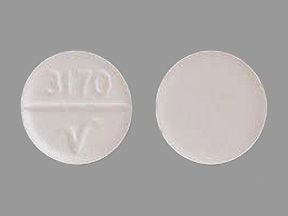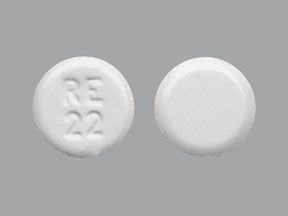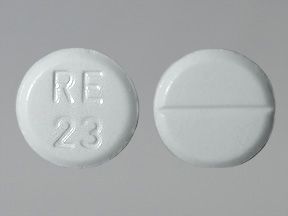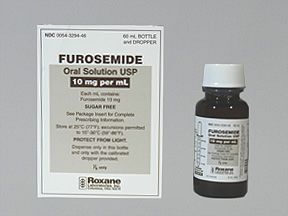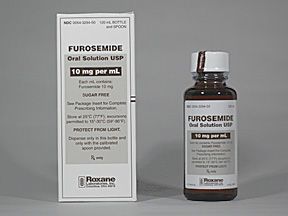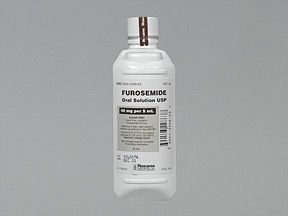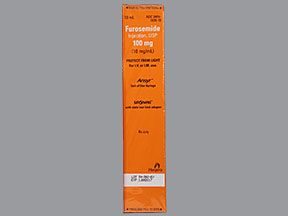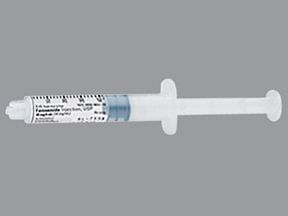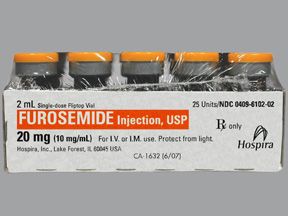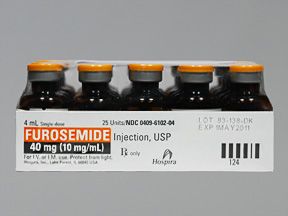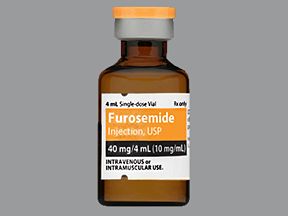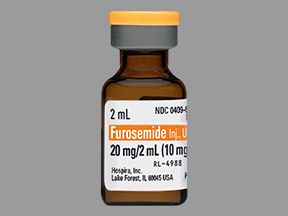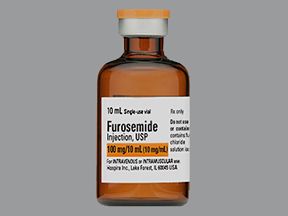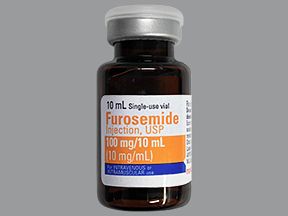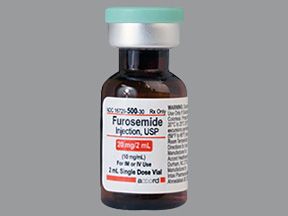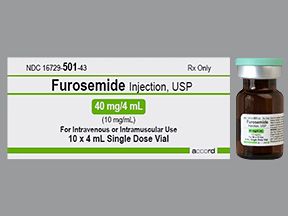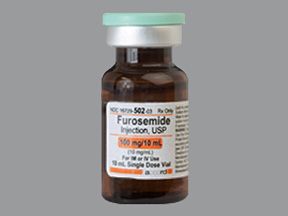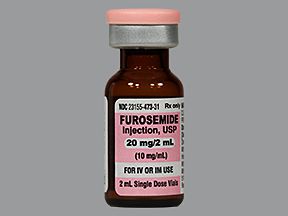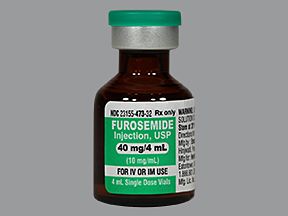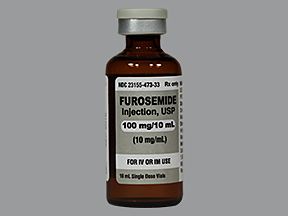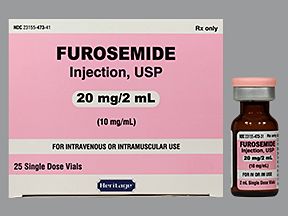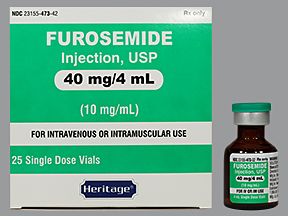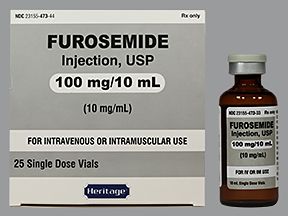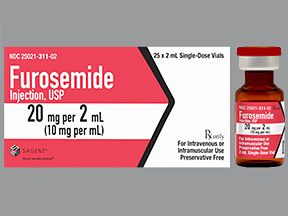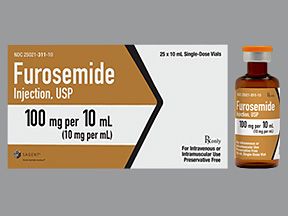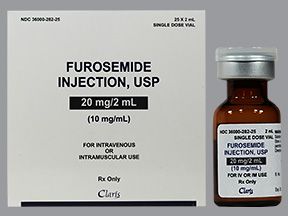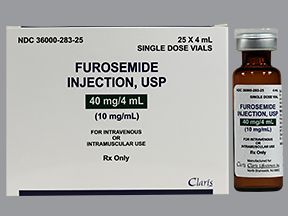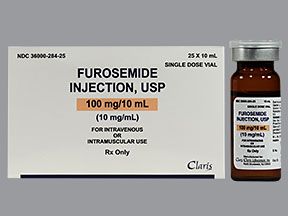Key Takeaways
- Furosemide oral tablet is a generic drug FDA-approved to treat high blood pressure in adults and edema (swelling caused by fluid buildup) in adults and some children.
- As a diuretic (water pill), furosemide works by helping your body get rid of excess salt and water by increasing the amount of urine your body makes. This helps lower your blood pressure and reduce swelling.
- Common side effects of furosemide include nausea and vomiting, diarrhea, constipation, dizziness, headache, blurred vision, increased urination, and skin reactions like itching or rash.
Furosemide oral tablet is a prescription drug that’s available as the brand-name drug Lasix. It’s also available as a generic drug. Generic drugs usually cost less than brand-name drugs. In some cases, they may not be available in every strength or form as the brand-name version.
In addition to an oral tablet, furosemide comes as an oral solution and an injectable solution that a healthcare professional gives. This article focuses on the oral tablet form of furosemide.
Why it’s used
Furosemide is used to treat hypertension (high blood pressure) in adults.
It is also used to treat edema in adults and some children. (This is swelling due to fluid buildup in the body.) Edema can be caused by other medical conditions such as heart failure, cirrhosis of the liver, or kidney disease.
Furosemide may be used as a part of combination therapy to treat high blood pressure. This means you may need to take it with other medications.
How it works
Furosemide belongs to a class of drugs called diuretics. These drugs are often used to treat similar conditions because they have a similar mechanism of action (work in similar ways).
Furosemide works by helping your body get rid of excess salt and water. It does this by increasing the amount of urine your body makes. This helps lower blood pressure as well as reduce swelling.
Furosemide can cause mild or serious side effects. The following list contains some of the key side effects that may occur while taking furosemide. This list does not include all possible side effects.
For more information on the possible side effects of furosemide or tips on how to deal with a bothersome side effect, talk with your doctor or pharmacist.
More common side effects
The more common side effects that can occur with furosemide include:
- nausea or vomiting
- diarrhea
- constipation
- abdominal cramping
- vertigo (feeling like you or the room is spinning)
- dizziness
- headache
- blurred vision
- itching or rash
- increased urination
If these effects are mild, they may go away within a few days or a couple of weeks. If they’re more severe or don’t go away, talk with your doctor or pharmacist.
Serious side effects
Call your doctor right away if you have serious side effects. Call 911 if your symptoms feel life threatening or if you think you’re having a medical emergency. Serious side effects and their symptoms can include the following:
- Excessive loss of water and electrolytes, such as potassium. Symptoms can include:
- dry mouth
- feeling of thirst
- weakness
- drowsiness
- restlessness
- muscle pains or cramps
- urinating less
- fast or atypical heartbeat
- severe nausea or vomiting
- Low levels of thyroid hormones. Symptoms can include:
- tiredness
- weakness
- weight gain
- dry hair and skin
- increased feelings of being cold
- Pancreatitis (inflammation of the pancreas). Symptoms can include:
- pain when you eat or drink
- severe nausea or vomiting
- fever
- Elevated liver enzymes, which could be a sign of liver damage.
- Hearing loss or ringing in your ears (can be temporary or permanent).
- Severe skin reactions, including toxic epidermal necrolysis (TEN), Stevens-Johnson syndrome, and drug reaction with eosinophilia and systemic symptoms (DRESS). Symptoms can include:
- serious skin rash
- blistering or peeling skin
- fever
- Orthostatic hypotension (low blood pressure that happens when you stand up).
- Allergic reaction.
Furosemide can interact with several other medications. Different interactions can cause different effects. For instance, some can interfere with how well a drug works, while others can cause increased side effects.
This section gives examples of medications that can interact with furosemide. Not all drugs that may interact with furosemide are included.
Before taking furosemide, be sure to tell your doctor and pharmacist about all prescription, over-the-counter, and other drugs you take. Also tell them about any vitamins, herbs, and supplements you use. Sharing this information can help you avoid potential interactions.
If you have questions about drug interactions that may affect you, ask your doctor or pharmacist.
Antibiotics
Antibiotics can increase your risk of hearing damage or loss when taken with furosemide. These drugs include:
Antiseizure drug
Taking the antiseizure drug phenytoin (Dilantin) with furosemide can decrease the effects of furosemide.
Certain cancer drugs
Taking the cancer drug cisplatin with furosemide can increase your risk of kidney problems and hearing damage or loss.
Taking the cancer drug methotrexate (Trexall) with furosemide can decrease the effects of furosemide. Also, furosemide may increase the amount of methotrexate in your body, which can increase side effects.
Immunosuppressant
Taking the immunosuppressant drug cyclosporine (Sandimmune) with furosemide can increase your risk of gout.
Mood stabilizer
Taking lithium (Lithobid) with furosemide can increase the levels of lithium in your body. This raises your risk of side effects from lithium.
Certain muscle relaxers
Taking certain muscle relaxers such as succinylcholine (Anectine) with furosemide can increase the effects of these drugs. This raises your risk of side effects.
Other blood pressure drugs
Taking furosemide with other blood pressure drugs can cause your blood pressure to drop to a dangerously low level. These drugs include:
- benazepril (Lotensin)
- enalapril (Vasotec)
- fosinopril
- lisinopril (Zestril)
- perindopril
- quinapril
- ramipril (Altace)
- losartan (Cozaar)
- candesartan (Atacand)
- valsartan (Diovan)
- irbesartan (Avapro)
Furosemide is often taken with other blood pressure drugs. If your doctor recommends taking furosemide with another blood pressure drug, they may adjust your dosages to help decrease your risk of severely low blood pressure.
Pain and inflammation drugs (NSAIDs)
Taking nonsteroidal anti-inflammatory drugs (NSAIDs) with furosemide can increase the levels of these drugs in your body. This raises your risk of dangerous side effects. NSAIDs include:
- aspirin (Bayer)
- ibuprofen (Advil)
- naproxen (Aleve)
- indomethacin (Indocin)
- magnesium salicylate (Doan’s)
Thyroid drug
Taking high doses of furosemide with the thyroid drug levothyroxine (Synthroid) can make levothyroxine less effective. This means it won’t work as well to treat your thyroid condition.
Ulcer drug
Taking the ulcer drug sucralfate (Carafate) with furosemide can make furosemide less effective. This means it won’t work as well to manage your symptoms.
You should not take sucralfate within 2 hours of taking furosemide.
Diuretics (water pills)
Taking other diuretics such as ethacrynic acid (Edecrin) with furosemide can increase your risk of hearing damage or loss.
As with all medications, the cost of furosemide can vary. The actual price you’ll pay depends on your insurance plan, your location, and the pharmacy you use.
Drug coupons: You can visit Optum Perks for price estimates of furosemide. These estimates are based on the use of Optum Perks coupons. Note: Optum Perks coupons cannot be used with insurance copays or benefits.
Financial and insurance assistance: If you need financial support to pay for furosemide or help understanding your insurance coverage, help is available. Medicine Assistance Tool and NeedyMeds offer cost resources and information.
Learn more about saving money on prescriptions.
The furosemide dosage your doctor prescribes will depend on several factors. These include:
- the type and severity of the condition you’re using furosemide to treat
- your age
- the form of furosemide you take
- other medical conditions you may have
Typically, your doctor will start you on a low dosage and adjust it over time to reach the dosage that’s right for you. They’ll ultimately prescribe the smallest dosage that provides the desired effect.
The following information describes dosages that are commonly used or recommended. However, be sure to take the dosage your doctor prescribes for you. Your doctor will determine the best dosage to suit your needs.
Forms and strengths
Generic: furosemide
- Form: oral tablet
- Strengths: 20 milligrams (mg), 40 mg, and 80 mg
Brand: Lasix
- Form: oral tablet
- Strengths: 20 mg, 40 mg, and 80 mg
Dosage for hypertension (high blood pressure)
Adult dosage (ages 18 to 64 years)
- The usual starting dose is 80 mg per day, taken as 40 mg twice each day.
- Your doctor may change your dose or add other blood pressure medications to your treatment plan. This will depend on how your body responds to furosemide.
Child dosage (ages 0 to 17 years)
This drug has not been studied in children for treating high blood pressure.
Older adult dosage (ages 65 years and older)
The kidneys of older adults may not work as well as they used to. This can cause the body to process drugs more slowly. As a result, more of a drug stays in the body for a longer time, increasing the risk of side effects. If you’re an older adult, your doctor may start you on a lowered dose or a different medication schedule. This can help keep levels of furosemide from building up too much in your body.
Special considerations
Furosemide is removed from your body by your kidneys. If you have kidney problems, more of the drug may stay in your body longer. This can cause dangerous side effects. Your doctor may start you on a lower dose and monitor how well your kidneys are working to make sure this drug is safe for you.
Dosage for edema
Adult dosage (ages 18 to 64 years)
- The usual starting dose is 20 to 80 mg, taken once per day. Your doctor may change your dose depending on how your body responds to the drug.
- Once your doctor determines your long-term (maintenance) dose, you may take it once or twice per day.
Child dosage (ages 0 to 17 years)
- The usual dose is 2 mg per kilogram (kg) of body weight taken once per day. (For reference, 1 kg is about 2.2 pounds.)
- It is not recommended for children to take doses of furosemide greater than 6 mg per kg of body weight.
- Your doctor may change your child’s dosage depending on how your child’s body responds to the drug.
Older adult dosage (ages 65 years and older)
The kidneys of older adults may not work as well as they used to. This can cause the body to process drugs more slowly. As a result, more of a drug stays in the body for a longer time, increasing the risk of side effects. If you’re an older adult, your doctor may start you on a lowered dose or a different medication schedule. This can help keep levels of furosemide from building up too much in your body.
Special considerations
Furosemide is removed from your body by your kidneys. If you have kidney problems, more of the drug may stay in your body longer. This can cause dangerous side effects. Your doctor may start you on a lower dose and monitor how well your kidneys are working to make sure this drug is safe for you.
Furosemide oral tablet comes with several warnings.
FDA warning: Dehydration risk
This drug has a boxed warning. This is the most serious warning from the Food and Drug Administration (FDA). A boxed warning alerts doctors and patients to drug effects that may be dangerous.
Furosemide helps your body get rid of excess water. If you take too much of this drug, it can lead to very low amounts of water and electrolytes in your body. This can cause dehydration. Your doctor will monitor your fluid levels and may change your dosage based on those levels.
Low blood pressure warning
This drug can cause low blood pressure. Symptoms include feeling dizzy and faint after standing up. If this occurs, move slowly when changing positions after sitting or lying down. If this problem continues, call your doctor.
Low potassium levels warning
This drug can cause low potassium levels. (Potassium is a mineral that helps your nerves, muscles, and organs work.) Symptoms include fatigue, muscle weakness, and nausea or vomiting. Call your doctor if you have these symptoms.
Low thyroid level warning
High doses (over 80 milligrams) of furosemide can cause low levels of thyroid hormones. If you’re taking high doses of this drug and have symptoms of thyroid problems, call your doctor. These symptoms can include:
- tiredness
- weakness
- weight gain
- dry hair and skin
- increased feelings of being cold
Allergy warning
If you have an allergy to sulfonamides (sulfa drugs), you may also be allergic to furosemide. Taking this drug can cause a severe allergic reaction, resulting in symptoms such as:
- difficulty breathing or swallowing
- swelling of your throat or tongue
- hives
If you have these symptoms, call 911 or go to the nearest emergency room right away.
You should not take this drug again if you have ever had a severe allergic reaction to it or sulfonamides before. Taking it a second time after any allergic reaction to it could be fatal. Discuss any allergies you may have with your doctor before taking furosemide.
Alcohol interaction
Consuming alcohol while taking furosemide can make the drug’s side effects worse. For instance, it can worsen a sudden drop in blood pressure when you stand up after sitting or lying down. It can also make you feel dizzier or more lightheaded.
Warnings for people with certain health conditions
For people with kidney problems: Furosemide is removed from your body by your kidneys. If you have kidney problems, more of the drug may stay in your body longer. This could lead to dangerous side effects, including very low blood pressure. Your doctor may start you on a lower dose of this drug. Your doctor may also monitor how well your kidneys are working to make sure furosemide is safe for you to take.
For people with liver problems: If you have liver problems such as cirrhosis or ascites, it’s best to receive furosemide in a hospital. Furosemide can cause very low electrolyte levels, which can lead to serious liver damage and loss of brain function. Your doctor will monitor you closely during treatment.
For people with diabetes: Furosemide can make it harder to manage your blood sugar (glucose) levels. Before taking this drug, be sure your doctor knows you have diabetes.
For people with bladder disorders: If you have severe problems with emptying your bladder completely, furosemide can make your condition worse. Before taking this drug, be sure your doctor knows you have a bladder disorder.
For people with thyroid problems: High doses (over 80 milligrams) of furosemide can cause low levels of thyroid hormones. Be sure to tell your doctor about your thyroid problems before you start taking furosemide.
Warnings for other groups
For pregnant people: Talk with your doctor if you’re pregnant or planning to become pregnant. Animal studies have reported fetal harm occurring with pregnant animals receiving furosemide. However, there haven’t been enough studies on pregnant humans to be certain how the drug might affect the fetus. This drug should only be used during pregnancy if the potential benefit justifies the potential risk to a fetus.
For people who are breastfeeding: Furosemide may pass into breast milk and can cause serious side effects in a child who is breastfed. It may also cause lower milk production. Tell your doctor if you are breastfeeding. They will recommend whether to stop breastfeeding or stop taking this drug.
For children: In premature infants and children younger than 4 years of age, furosemide may cause kidney problems. It can lead to kidney stones and calcium deposits in the kidneys. If furosemide is given to premature infants during the first few weeks of life, it may increase the risk of problems with the lungs and heart.
Furosemide oral tablet is used for short-term or long-term treatment. It comes with serious risks if you don’t take it as prescribed.
If you stop taking the drug suddenly or don’t take it at all: If you are treating high blood pressure, your blood pressure may rise. This raises your risk of serious problems such as stroke or heart attack.
If you are treating edema, your swelling could get worse. This increases your risk of serious problems such as pain, infections, leg ulcers (long-lasting sores), and blood clots.
If you miss doses or don’t take the drug on schedule: Your medication may not work as well or may stop working completely. For this drug to work well, a certain amount needs to be in your body at all times.
If you take too much: You could have dangerous levels of the drug in your body. Symptoms of an overdose of this drug can include:
- extreme tiredness
- dizziness
- thirst
- low blood pressure
If you think you’ve taken too much furosemide, call your doctor right away. You can also call America’s Poison Centers at 800-222-1222 or use its online tool. However, if your symptoms are severe, call 911 or go to the nearest emergency room.
What to do if you miss a dose: Take your dose as soon as you remember. But if you remember just a few hours before your next scheduled dose, take only one dose. You should not try to catch up by taking two doses at the same time. This could result in dangerous side effects.
How to tell if the drug is working: If you’re treating high blood pressure, your blood pressure should be lowered. But you will likely not feel any different. Your doctor will monitor your blood pressure. You can also check it at home using a home blood pressure monitor. If you’re treating edema, your swelling should go down.
Keep these considerations in mind if your doctor prescribes furosemide oral tablet for you.
General
- Furosemide causes you to urinate more, so you should avoid taking it at bedtime.
- You can cut or crush the furosemide tablet.
Storage
- Keep furosemide at room temperature of 59°F to 86°F (15°C to 30°C).
- Keep this drug away from light.
- You should not store this medication in moist or damp areas, such as bathrooms.
Refills
A prescription for this medication is refillable. You should not need a new prescription for this medication to be refilled. Your doctor will write the number of refills authorized on your prescription.
Travel
When traveling with your medication:
- Always carry your medication with you or in your carry-on bag.
- You should not worry about airport X-ray machines. They can’t affect your medication.
- You may need to show airport staff the pharmacy label for your medication. Always carry the original prescription-labeled box with you.
- You should not put this medication in your car’s glove compartment or leave it in the car. Be sure to avoid doing this when the weather is very hot or very cold.
Self-management
If you’re treating high blood pressure, your doctor may suggest that you monitor your blood pressure. You can do this using a home blood pressure monitor. Your doctor can tell you where to buy this device and how to use it.
Clinical monitoring
Your doctor will monitor the following:
- Blood pressure: Your doctor will check your blood pressure to make sure this drug is managing your blood pressure.
- Electrolyte levels: This drug can cause changes in your electrolyte levels. This includes potassium levels. Your doctor will check your levels to make sure your electrolytes are in a healthy range. (Electrolytes are minerals that manage the fluid levels and other functions in your body.)
- Kidneys: This drug can make kidney problems worse or even cause new ones. If furosemide causes problems for your kidneys, your doctor may need to reduce your dose, or you may need to stop taking the drug.
- Liver: This drug can increase the level of liver enzymes in your body. A raised enzyme level can mean you have liver damage. Your doctor may monitor your liver enzyme level.
- Thyroid levels: This drug can cause low thyroid hormone levels. Your doctor may do blood tests to monitor your thyroid levels.
Your diet
Furosemide can cause low blood pressure. A low salt diet puts you at even higher risk of low blood pressure. If you are on a low salt diet, talk with your doctor about whether this drug is right for you.
Your doctor may suggest that you eat foods high in potassium. These include bananas, dark leafy greens, and avocados.
Sun sensitivity
Your skin may be more sensitive to sunlight while taking furosemide.
- Avoid staying outside directly under the sun for long periods of time.
- Wear protective clothing that covers most areas of your body.
- Use protective sunscreen products.
Learn more about protecting yourself from the sun.
Hidden costs
You may need to buy a home blood pressure monitor to check your blood pressure at home. Your doctor can tell you more.
There are other drugs available to treat your condition. Some may be better suited for you than others. Talk with your doctor about other drug options that may work for you.
Disclaimer: Medical News Today has made every effort to make certain that all information is factually correct, comprehensive, and up to date. However, this article should not be used as a substitute for the knowledge and expertise of a licensed healthcare professional. You should always consult your doctor or another healthcare professional before taking any medication. The drug information contained herein is subject to change and is not intended to cover all possible uses, directions, precautions, warnings, drug interactions, allergic reactions, or adverse effects. The absence of warnings or other information for a given drug does not indicate that the drug or drug combination is safe, effective, or appropriate for all patients or all specific uses.

